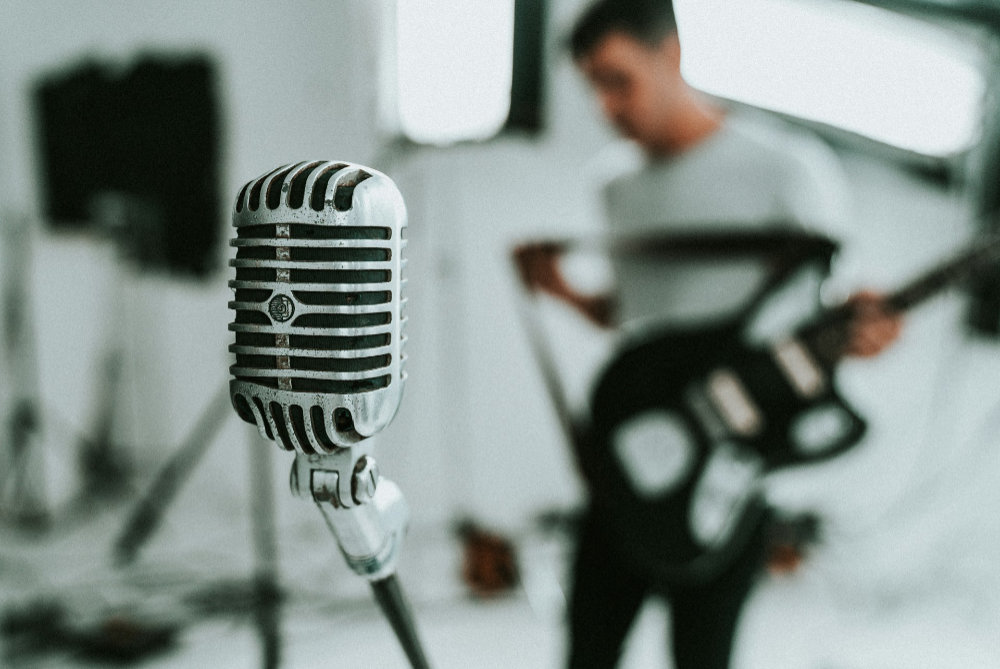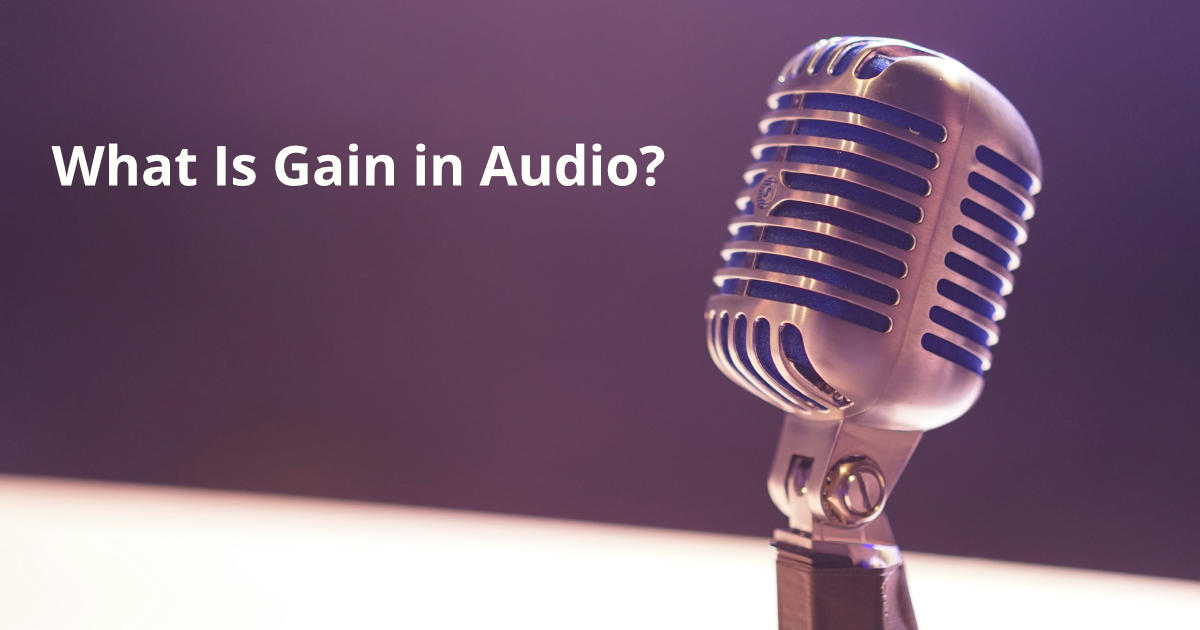Estimated reading time: 15 minutes
When you’re jamming to your favorite tunes or recording the next hit, there’s this little magic knob that makes everything sound just right. That’s gain for you – a crucial part of your audio experience, and it’s time to get cozy with it. This article is your friendly guide to understanding what gain is all about without getting lost in technical jargon.
So, let’s imagine gain as the secret sauce that brings out the flavor in your audio recipe. It’s not just about volume; it’s about control and finesse. Whether you’re a musician, a podcaster, or just an audio enthusiast, mastering gain can take your sound from good to great.
Join us as we unravel the mystery of gain. We’ll explore its role in audio production, find out why it matters for your guitar amp, and learn how to use it to enhance sound quality. By the end of this read, you’ll be a gain guru, ready to tweak and tune like a pro!
Table of contents
- Understanding the Basics: What is Gain?
- The Role of Gain in Audio Production
- Input Stage: The Start of Gain Control
- Gain Level and Gain Knob: The Tools of Gain Control
- The Impact of Gain on Guitar Amp
- Understanding the Dynamic Range in Gain Control
- Decoding the Output Level and Signal Level
- The Role of the Volume Knob in Gain Control
- Enhancing Sound Quality with Proper Gain Staging
- Output Stage: The Final Step in Gain Control
- Understanding Microphone Preamps and Their Role in Gain
- Difference Between Gain and Other Audio Signals
- The Importance of the Noise Floor in Audio Gain
- FAQ
Understanding the Basics: What is Gain?
So, what is gain? Simply put, gain is the first step in the journey of your audio signal. It’s all about adjusting the strength of the input signal from your microphone, guitar, or any other sound source before it hits the rest of your audio system.
Think of gain as a bouncer at a club, deciding how much signal gets in. Too little, and your sound is a wallflower, barely noticeable. Too much, and it’s that over-the-top party animal no one can ignore – and not always in a good way. The goal is to find that sweet spot where the signal is strong enough to be clear and detailed but not so strong that it causes distortion.
In essence, gain sets the stage for everything that comes after it in the audio chain. It’s the foundation upon which your audio house is built. Get it right, and everything else falls into place.
The Role of Gain in Audio Production
Gain isn’t just about making things loud; it’s a critical element in audio production that affects how all the other parts of your system work together. It’s the first decision you make in shaping your sound, and it can affect the tone, clarity, and overall vibe of your audio.
In the studio, gain is the unsung hero that can make or break a recording. It determines how well your gear performs, ensuring that signals are clean and that you’re capturing all the nuances of a performance.
On stage, gain is the master of ceremonies, ensuring that every instrument and voice is heard in harmony. It’s about balance and making sure the audience gets the best experience.

Input Stage: The Start of Gain Control
The input stage is where the magic of gain begins. It’s the front door to your audio system, where the initial adjustment of the signal level takes place. This is where you set the tone for what’s to come.
At the input stage, you’re looking to get the level just right. Too low, and you’ll lose detail and risk a noisy signal. Too high, and you’ll introduce distortion into the mix. It’s a delicate balance, much like seasoning a dish.
The input stage is also where you can shape the character of your signal. Different gear and settings can add warmth, brightness, or grit to your sound. It’s the first brushstroke on your audio canvas.
Gain Level and Gain Knob: The Tools of Gain Control
Now let’s talk tools. The gain level is like a dial on a safe, and the gain knob is the key you turn to unlock your sound’s potential. These tools are how you interact with gain.
The gain knob is typically found on mixing consoles, audio interfaces, and guitar amps. It’s your hands-on control for adjusting the gain level. As you turn the knob, you’re either boosting or cutting the strength of the input signal.
The gain level, meanwhile, is the amount of increase or decrease you’re applying to the signal. It’s measured in decibels (dB), and it’s what you’re watching when you’re tweaking that knob.
| Aspect | Gain Level | Gain Knob |
|---|---|---|
| Definition | Amount of increase or decrease in signal strength | Physical control for adjusting gain levels |
| Location | Represented numerically (e.g., +10 dB, -5 dB) | Found on audio equipment such as mixers or amplifiers |
| Adjustment Range | Can be adjusted within a specific range | Can be turned clockwise or counterclockwise |
| Impact on Sound Quality | Affects signal clarity and fidelity | Determines the strength of the input signal |
| Control Mechanism | Controlled via software or hardware interfaces | Directly manipulated by the user for real-time adjustments |
| Units of Measurement | Measured in decibels (dB) | N/A |
The Impact of Gain on Guitar Amp
Guitarists, listen up! Gain is your best friend when it comes to shaping your signature sound. On a guitar amp, gain determines the amount of overdrive or distortion you get. It’s the difference between a clean twang and a screaming solo.
When you crank up the gain on your guitar amplifier, you’re pushing the tubes or circuits harder, which creates that gritty, raw sound that rock is known for. But it’s not all about going to eleven. Sometimes, dialing back the gain can give you a smooth, bluesy tone that’s just as expressive.
Understanding how gain affects your guitar amp is essential for finding your sound. It’s the first step in crafting those tones that turn heads and drop jaws.

Understanding the Dynamic Range in Gain Control
Dynamic range – sounds fancy, but it’s just the difference between the quietest and loudest parts of your audio signal. Gain control plays a massive role in defining this range.
With proper gain control, you can ensure that your quiet moments are gentle whispers and your loud moments are booming shouts. It’s about capturing the full spectrum of sound without losing the details or causing distortion.
A wide dynamic range gives your audio life and depth. It allows for emotional nuance and impact, whether you’re recording a podcast or laying down a guitar track.
Decoding the Output Level and Signal Level
Let’s demystify two terms that often trip people up: output level and signal level. The signal level is the strength of your audio signal at any point in the chain. The output level is the strength of the signal as it leaves a piece of equipment, like a mixer or an amplifier.
When you adjust gain, you’re affecting the signal level at the input stage. But remember, every piece of gear your signal passes through can change its level. The output level of one device becomes the input level for the next.
Understanding how these levels interact is key to managing your gain throughout the audio path. It’s like passing a baton in a relay race – you want a smooth handoff every time.
| Aspect | Output Level | Signal Level |
|---|---|---|
| Definition | Strength of audio signal leaving a device | Strength of audio signal at any point in the chain |
| Adjustment Location | Typically set at the output stage | Varies depending on the location in the chain |
| Control Mechanism | Adjusted using volume controls or faders | Varies depending on the equipment and context |
| Importance | Determines the loudness of the audio output | Reflects the strength of the signal for processing |
| Impact on Sound Quality | Affects how loud the audio is perceived by listeners | Key in maintaining optimal levels throughout the chain |
| Units of Measurement | Measured in decibels (dB) or relative units | Measured in decibels (dB) or relative units |
The Role of the Volume Knob in Gain Control
Now, don’t confuse the volume knob with the gain knob. They’re like cousins in the audio family, related but not the same. The volume knob controls the output level sent to your speakers or headphones.
While the gain knob sets the stage, the volume knob takes the final bow. It’s about how loud the sound is when it reaches your ears. Adjusting the volume doesn’t change the signal’s quality; it just changes the listening level.
The volume knob is your audience’s best friend. It ensures that everyone, from the front row to the back, gets the full audio experience without having to squint with their ears.
Enhancing Sound Quality with Proper Gain Staging
Proper gain staging is like choreographing a dance – every step and turn needs to be precise. It’s the process of managing the gain level at every stage of the audio signal path to maintain the highest sound quality.
Good gain staging prevents noise and distortion from crashing your audio party. It ensures that every device in the chain operates at its sweet spot, giving you the cleanest, clearest sound.
When you nail proper gain staging, you’ll notice that your mixes sound more professional and polished. It’s like ironing the wrinkles out of a shirt – everything looks and sounds sharper.
Output Stage: The Final Step in Gain Control
The output stage is where your audio signal takes its final form before hitting the speakers. It’s the last chance to make sure the gain is just right.
At the output stage, you’re aiming to deliver a strong, clean signal to your audience. This is where all your careful gain adjustments come together to create a cohesive sound.
It’s also where you can add some final touches with mastering – the audio equivalent of putting a frame around a painting. The right output level can make your sound stand out without pushing it over the edge.

Understanding Microphone Preamps and Their Role in Gain
Microphone preamps are like the unsung heroes of the audio world. They’re the first stop for your mic’s signal, and they play a huge role in gain.
A good preamp boosts your microphone’s signal to a usable level without adding unwanted noise. It gives you control over the gain at the very start of the signal chain.
Choosing the right preamp and setting the gain correctly can make your vocals shine or your instruments sing. It’s a critical step in capturing a great sound right from the source.
Microphone preamps are vital for ensuring your vocals and instruments sound their best right from the get-go. But if you’re looking for the best digital audio workstation (DAW) to record those killer vocals, check out our blog post on the topic. It’s all about finding the perfect match for your recording needs. So, dive in and discover the ideal DAW to make your vocals pop!
Difference Between Gain and Other Audio Signals
It’s time to clear up the confusion between gain and other audio signals. Gain is all about the input signal strength, but there are other signals to consider, like line level, instrument level, and speaker level.
Line level is the standard signal strength used to connect different audio devices. Instrument level is what comes out of your guitar or keyboard before it hits an amplifier. Speaker level is the beefed-up signal that drives your speakers.
Each of these levels has its place in the audio chain, and understanding each one helps you manage gain like a pro. It’s like knowing the right ingredients for your audio stew.
| Aspect | Gain | Other Audio Signals |
|---|---|---|
| Definition | Adjusts signal strength | Represents different signal levels or types |
| Purpose | Sets foundation for sound quality | Determines signal level or type of signal |
| Adjustment Location | Typically adjusted at input stage | Varies based on signal type and equipment |
| Effect on Quality | Affects signal clarity and fidelity | Influences characteristics of audio signal |
| Examples | Gain knob on mixing console | Line level, instrument level, speaker level |
The Importance of the Noise Floor in Audio Gain
Now let’s talk about a concept that’s closely related to gain and just as important: the noise floor. Imagine you’re in a quiet room, and you start to hear a faint buzzing sound. That’s akin to the noise floor in audio – it’s the sum of all the unwanted sound in a system, from the electrical hum of your equipment to the ambient noise in the room.
Why does this matter when we’re talking about gain? Well, gain essentially refers to the amplification of an audio signal. However, when you amplify a signal, you’re not just turning up the music or the voice you want to hear; you’re also increasing the volume of that pesky noise floor. This is why understanding the noise floor is crucial in managing gain effectively. By keeping the noise floor as low as possible, you ensure that when you do turn up the gain, you’re boosting the sounds you want, not the ones you don’t.
It’s like trying to have a conversation in a crowded café. If the background noise is too loud, you’ll have to speak louder (increase your gain) to be heard. But if the café is relatively quiet (low noise floor), you won’t have to raise your voice as much. In audio production, managing the noise floor and gain hand in hand is key to achieving clear, high-quality sound.
Understanding Input Level and Output Volume
Diving a bit deeper into the world of audio gain, it’s essential to differentiate between a few terms that often get mixed up: input level, output volume, and gain. Think of your audio system like a water pipe system, where the water pressure at different points can be adjusted.
The input level is like the water pressure at the source – it’s the strength of the audio signal coming into your device, be it a microphone, a guitar, or a keyboard. This is where the first stage of gain comes into play, often controlled by a gain knob or slider on your equipment. Adjusting the gain at this stage determines how strongly the signal is fed into the rest of the system.
Output volume, on the other hand, is like the water pressure at the end of the system – it’s the final sound level that comes out of your speakers or headphones. While gain affects the signal’s strength throughout the system, the output volume is all about how loud the final output is.
Understanding the relationship between input level, gain, and output volume is crucial in audio production. Adjusting the gain properly at the input stage ensures that the signal is strong enough to be processed and mixed without introducing unwanted noise or distortion. At the same time, it allows for the final output volume to be set at a level that’s appropriate for the listener.
| Aspect | Input Level | Output Volume |
|---|---|---|
| Definition | Strength of audio signal entering a device | Volume of sound produced by speakers/headphones |
| Adjustment Location | Typically adjusted at the input stage | Adjusted at the output stage |
| Control Mechanism | Controlled by gain knobs or sliders | Controlled by volume knobs or sliders |
| Importance | Determines strength of signal for processing | Determines perceived loudness of the audio output |
| Impact on Sound Quality | Proper adjustment avoids distortion and noise | Controls the overall listening level |
| Units of Measurement | Measured in decibels (dB) | Measured in decibels (dB) or relative units |
The Role of Makeup Gain Control in Audio Production
Now, let’s talk about a specific type of gain that plays a vital role in audio production: makeup gain. This comes into play primarily when using compressors in your audio chain. Compression is a process that reduces the dynamic range of your audio signal, making the quiet parts a bit louder and the loud parts a bit quieter to achieve a more balanced sound. However, this process can also reduce the overall signal level.
Enter makeup gain. After compression has done its job, makeup gain is used to boost the signal back up to a suitable level. It’s like giving your audio a little “makeup” to ensure it looks its best before heading out. Makeup gain control lets you compensate for the level reduction caused by compression, ensuring your audio maintains its presence and power in the mix.
The careful application of makeup gain is a key aspect of proper gain staging, a process that ensures signal levels are optimally managed throughout the audio production chain. By understanding and utilizing makeup gain effectively, you can achieve professional-sounding results, whether you’re mixing a podcast, a song, or any other audio project.
Conclusion: Achieving the Perfect Audio Gain
Understanding and managing audio gain is more art than science. It requires a keen ear, a deep understanding of your equipment, and a lot of practice. However, by grasping the basics outlined in this guide—recognizing the importance of the noise floor, differentiating between input level and output volume, and mastering the use of makeup gain—you’ll be well on your way to achieving the perfect audio gain for your projects.
Remember, the goal is to amplify the sounds you want while minimizing the ones you don’t. With patience and practice, you’ll find that sweet spot where your audio sounds clear, powerful, and professional. So go ahead, experiment with your gain settings, and don’t be afraid to make mistakes. That’s all part of the learning process in the quest for perfect audio gain.
Related Posts
- The Beginner’s Guide on How to EQ Vocals for Stellar Sound
- What Does a Recording Engineer Do? Behind the Soundboard
- How to Start Making Music? A Beginner’s Guide
- What is a Vocal Run? Unleashing the Magic
- What is Audio Normalization? Breaking Down the Basics
- What is a Stem in Music? Demystifying Music Production
- What is a Riff in Music? Setting the Rhythm Free
FAQ
Gain refers to the adjustment of signal strength in audio equipment. It’s crucial because it sets the foundation for sound quality, balancing signal levels to avoid distortion and optimize clarity throughout the audio chain.
Gain adjusts the input signal strength, whereas volume controls the output sound level. Gain affects the signal’s quality and clarity, while volume simply adjusts how loud or soft the sound is perceived by the listener.
Proper gain staging involves managing signal levels throughout the audio path to maintain optimal sound quality. It matters because it prevents noise and distortion, ensuring a clean, professional sound by allowing each piece of equipment to operate at its optimal level.
Makeup gain compensates for level reductions caused by processes like compression, ensuring a consistent audio level throughout the production chain. It restores lost volume, maintaining the presence and impact of the audio in the mix.
Focus on understanding the relationship between input level, gain, and output volume. Practice adjusting gain settings to achieve a balanced sound without distortion. Pay attention to proper gain staging and utilize makeup gain when necessary to maintain consistent audio levels.
